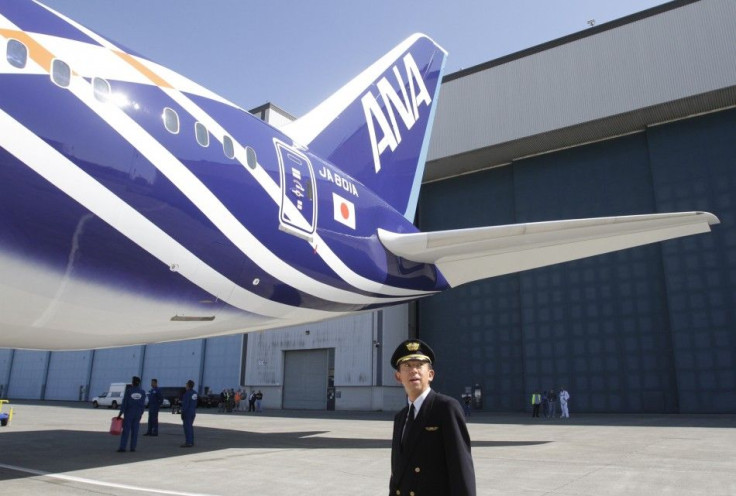Boeing 'Dreamliner' to (Finally) Take Flight

After years of headaches and heartbreak, Boeing Co. got the green light from the U.S. government on Friday to enter its 787 Dreamliner into commercial service to fly passengers.
Randy Babbitt, Federal Aviation Administration administrator, presented Boeing with certification declaring the long-delayed aircraft fit for service at a ceremony under sunny, blue skies in Everett, Wash., north of Seattle.
Boeing will make the first delivery of its plastics-based airplane next month to Japan's All Nippon Airways Co Ltd. The first Dreamliner will arrive at Tokyo's Haneda airport on Sept. 28.
The Dreamliner, which promises to raise the bar for fuel efficiency and passenger comfort, is about three years behind its original schedule and at least several billion dollars over budget by some outside estimates.
It's momentous. A few years back no on thought this day would come. We pretty much have one step left and that's delivery, said Alex Hamilton, managing director with EarlyBirdCapital.
With 827 orders for the $185 million plane on the books, the Dreamliner may be Boeing's most hotly anticipated aircraft. And the 787 development program, which has seen stunning changes in leadership over the years, represents one of the thorniest chapters in the company's storied history.
The airframe is made largely of light-weight carbon composites that help lower fuel costs for airlines. The composites also allow various improvements for passengers such as more comfortable cabin air pressure and bigger windows.
Development and construction make unprecedented use of a vast global supply chain that could slash production costs, should it work correctly.
It will completely change the way that aircraft have been manufactured until now, Hamilton said.
Boeing expects a production rate of ten 787s per month by the end of 2013. Kinks in the supply chain, however, have caused several embarrassing program delays.
(For a graphic on the Dreamliner timeline click: r.reuters.com/haq43s)
Boeing, which competes with EADS (EAD.PA) unit Airbus for commercial plane orders, has said that it would bring more of the work on future models back in house.
It is unknown how long it could be before the 787 program earns a profit. Boeing Chief Executive Jim McNerney said in June that the program faces financial headwinds, and he declined to say when the 787 could make money.
The CEO has long insisted that while Boeing may have stumbled since proposing the aircraft eight years ago, it has built a plane that airlines around the world want and need for the long term.
Boeing did not disclose how much it has invested in the plane's development.
As Boeing celebrates FAA certification, the company continues to grapple with program challenges.
It is mired in a legal dispute with one of its top labor unions in Washington state, where it has traditionally built its aircraft.
The International Association of Machinists and the National Labor Relations Board have accused Boeing of building a nonunion 787 assembly plant in South Carolina to punish the IAM for past strikes.
Boeing blames one of its seven program delays on a 58-day strike in 2008 over a contract dispute, but it rejects the notion that placement of its second assembly line was retaliatory.
Boeing plans to assemble seven 787s a month in Everett and three more in South Carolina.
(Additional reporting by John Crawley; Editing by Steve Orlofsky and Gerald E. McCormick)
© Copyright Thomson Reuters 2024. All rights reserved.











